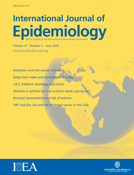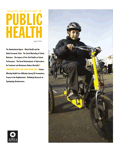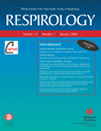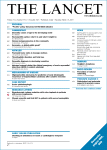Phase One Ecological Analyses
Ecological analyses were undertaken with ISAAC Phase One data to explore factors that may have contributed to the large variations found in Phase One [Asher 2010]. Symptom prevalence of all three conditions was positively associated with GNP, trans fatty acids, paracetamol, and women smoking, and inversely associated with food of plant origin, pollen, immunisations, tuberculosis notifications, air pollution, and men smoking. The magnitude of these associations was small, but consistent in direction between conditions. There were mixed associations of climate and antibiotic sales with symptom prevalence. The potential causality of these associations warrant further investigation. Factors which prevent the development of these conditions, or where there is an absence of a positive correlation at a population level may be as important from the policy viewpoint as a focus on the positive risk factors.
Economic factors
Early reports of asthma prevalence found high prevalences in affluent countries, and there were anecdotal reports of low prevalences in non-affluent countries. This led us to explore the relationship between gross national product (GNP) and symptoms, and we found this was weakly positive [Stewart 2001]. However caution should be used in interpreting the findings because of the great inequalities in income distribution within almost all countries in developing regions of the world. GNP represents the total economic activity of the country, reflecting mean wealth rather than median wealth, not distribution of wealth within a country. All other ecological analyses were adjusted for GNP
Air pollution
There is extensive evidence from individual level studies that air pollution may aggravate existing asthma. However does air pollution influence the proportion of children in a population who have asthma symptoms? We found a weak inverse relationship between modelled city-level particulate air pollution (PM10) and symptoms of the three conditions, even after controlling for GNP which has a strong inverse association with air pollution [Anderson 2010]. Meta-analyses of data from countries with multiple centres found some evidence of weak positive associations. These findings are in line with other, more limited ecological evidence which suggest that community levels of particulate air pollution do not explain variations in prevalence between communities.
Antibiotics
The hygiene hypothesis postulates that growing up in a more hygienic environment with less microbial exposure may enhance atopic (TH2) immune responses, whereas microbial pressure would drive the response of the immune system—which is known to be skewed in an atopic TH2 direction during fetal and perinatal life—in a TH1 direction and away from its tendency to develop atopic immune responses. This would protect against atopy and allergic (but not nonallergic) asthma. A corollary of the hygiene hypothesis is that antibiotic use may increase the risk of asthma by reducing the protective effect of microbial exposure, for example, through disruption of the normal gut microbiota. This was explored in Phase One [Foliaki 2004] in 28 countries using country antibiotic sales. The relationships between symptom prevalence and antibiotic exposure was not clear cut: a mixture of weak inverse and positive effects were found between symptom prevalences and total antibiotic sales and broad spectrum antibiotic sales. This analysis suggested that even if there was a potential causal association of antibiotic use with asthma risk, it did not appear to explain the world wide differences between countries.
Climate
As climate affects whole populations, ecological studies are ideally suited to examine the relationship between prevalence of diseases and climatic conditions between populations. In the worldwide analyses few significant associations were seen [Weiland 2004]. As the world becomes more affected by climate change there may be some regions such as Western Europe where prevalence of disease is affected by potentially modifiable factors including humidity and temperature, but at a global level our ecological analyses showed little effect.
Diet
Dietary patterns have changed rapidly with modernisation or westernisation, and the associated move away from plant-based foods and addition of man-made fats might affect symptom prevalence. No associations were found for meat, and milk, but there was a pattern of inverse association between plant-based food and symptoms of the three conditions [Ellwood 2001]. The analysis in European countries of trans fatty acids found a positive association, suggesting that man-made fats may be a factor in the prevalence of the three conditions [Weiland 2000]. Thus dietary influences on the three conditions require further investigation.
Immunisation
There had been mixed reports about whether immunisation had no effect on these three diseases, or was potentially a risk factor related to the hygiene hypotheses. Country level analyses showed no associations [Anderson 2010]. The more powerful centre-level analyses showed small inverse relationships between DTP and measles in the older age group only, with no associations with BCG. In view of earlier reports that immunisation might be a risk factor for asthma, this mainly null result is reassuring for population immunisation programmes, given their importance for child health.
Pollen
Pollen commonly triggers hay fever. On the other hand studies have found that the symptom prevalence of hay fever and asthma tends to be lower in rural than in urban areas, and lowest among people living on farms, where there is likely to be higher pollen exposure. In the Phase One ecological analysis exposure to allergenic pollen was assessed by exposures around the dates of early life [Burr 2003]. It did not appear to increase the risk of acquiring symptoms of respiratory allergy, and may even give some protection. but this has not been consistently found outside Europe and USA, and was not studied in our analyses. The degree of consistency in the inverse associations suggests the possibility of a protective effect of pollen on allergy.
Tobacco
Given the strong relationship between tobacco exposure and asthma symptoms at an individual level, we examined this at a centre and country level in Phase One. A mixed picture emerged for tobacco with no association observed between country tobacco consumption and symptoms [Mitchell 2001]. However there was generally a positive relationship between women smoking, yet an inverse association between men smoking and the three conditions. This analysis indicated that the well established individual level association between parental cigarette smoking and asthma did not account for the international differences in asthma prevalence.
Tuberculosis
There had been interest in whether the lack of exposure to infections such as tuberculosis increasing the risk of atopic disorders. We found inverse associations between asthma symptom prevalence and estimated TB incidence [Von Mutius 2000] and actual TB notifications rates [Shirtcliffe 2002], supporting other evidence that exposure to Mycobacterium tuberculosis may reduce the risk of developing asthma through induction of Th1 type immune responses. The implications of this relationship in the changing incidence of worldwide distributions of tuberculosis disease need further study.









